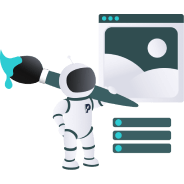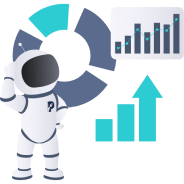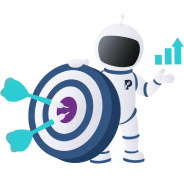

Measuring Facebook Ad Performance: 7 Metrics You Should Track
If you’ve been running Facebook ads for your business, you’re already tapping into one of the most powerful advertising platforms available. However, simply running ads isn’t enough – you need to measure their performance to understand what’s working and what isn’t. This is crucial for improving your return on investment and making informed decisions about your marketing strategy.
For many businesses or marketers, though, the idea of tracking ad performance can seem overwhelming. With so many metrics available – click-through rates, conversions, cost per click, and more – where do you even begin? Fortunately, it doesn’t have to be complicated.
This blog will explore the key metrics you need to track to ensure your Facebook ads are delivering results. Whether you’re looking to increase engagement, drive sales, or simply raise brand awareness, understanding these metrics will help you optimise your campaigns for success.
Let’s dive in and make sense of your Facebook ad data:
7 Facebook ad metrics to track
1. Impressions
Impressions refer to the total number of times your ad is shown to users, regardless of whether they engage with it. This metric provides insight into how often your ad is being seen, which is a critical starting point for understanding your campaign’s visibility. By tracking impressions, you can determine how well Facebook’s algorithms are pushing your ad to your target audience.
But impressions alone don’t tell the full story – they need context to be truly useful. For example, if your impressions are high but engagement is low, it could indicate that while your ad is being seen, it’s not resonating with the audience. This might prompt a closer look at your ad’s creative or messaging.
To enhance your understanding of impressions, you might also like to track reach. This is the number of unique users who saw your ad. While impressions count total views, reach only counts individuals.
These two metrics work together to give a fuller picture of your ad’s exposure. If your impressions are significantly higher than your reach, it means the same people are seeing your ad multiple times. This can be a good thing, as repeated exposure might increase brand awareness, but too high of a frequency (repeated exposure to the same users) could lead to ad fatigue. Balancing impressions and reach helps ensure that your ad is seen by as many unique individuals as possible without overwhelming your audience.
Another way to understand your impressions more deeply is by tracking cost per thousand impressions (CPM). This is the amount you pay for every 1,000 impressions of your ad. This is a good way to measure the cost-effectiveness of your campaign in terms of visibility. If your CPM is too high, you might want to revisit your targeting strategy or bid amount to reduce costs. A lower CPM indicates that you’re getting more exposure for less money, but it’s important to balance that with quality impressions – ads shown to the right people at the right time.
By measuring impressions in conjunction with reach and CPM, you get a clearer understanding of how effectively your ads are being delivered and how well you’re managing your budget for maximum visibility.
2. Engagement
Measuring engagement is crucial because it shows how well your audience is interacting with your ad. Engagement includes actions like likes, comments, shares, reactions, and clicks that indicate interest in your content.
A high engagement rate suggests that your ad is resonating with your target audience, prompting them to take actions beyond just seeing it. This not only helps with building brand awareness but also creates social proof – when users see others interacting with your ad, they’re more likely to do the same.
Engagement also impacts Facebook’s algorithms. Ads with high engagement tend to be shown to more people at a lower cost, as Facebook prioritises content that users find valuable. Tracking engagement helps you assess the effectiveness of your creativity, message, and targeting. If engagement is low, you might need to tweak your visuals, headline, or call to action to better connect with your audience.
3. Click-through rate (CTR)
In the spirit of getting more specific about engagement, the next metric is click-through rate (CTR). This is the percentage of people who clicked on your ad after seeing it. CTR helps measure the relevance of your ad to your audience, calculated by dividing the number of clicks by the number of impressions and then multiplying by 100.
A high CTR indicates that your ad is compelling and relevant to your target audience, as it shows that people are interested enough to take the next step – whether that’s visiting your website, signing up for a service, or learning more about your offer.
CTR is a strong indicator of ad performance because it helps gauge the effectiveness of your ad copy, visuals, and call-to-action. If your CTR is low, it might suggest that your ad isn’t resonating with viewers or that the targeting needs adjustment.
Monitoring CTR is important because it also affects your ad costs – Facebook’s algorithm favours ads with higher engagement, potentially lowering your cost per click (CPC). Overall, a strong CTR shows that your ad is successfully capturing attention and encouraging meaningful actions from your audience.
4. Conversions
Once you’ve mastered basic engagement metrics like clicks, it’s time to get more specific about measuring the actual outcomes of your Facebook ads – this is where conversions come in. Conversions track how many people took a specific, desired action after interacting with your ad. This action could be anything from making a purchase, signing up for a newsletter, downloading a resource, or filling out a lead form.
Focusing on conversions takes your understanding of engagement to the next level because it moves beyond just interaction and into outcomes that directly impact your business goals. While clicks and engagement are valuable, conversions show whether those interactions are driving real results.
By measuring conversions, you can determine how effective your ad is at encouraging users to complete the intended action. This helps you assess the quality of your traffic, not just the quantity. For instance, if you have a high CTR but low conversions, it might indicate that your landing page, offer, or sales funnel isn’t as persuasive as your ad.
Tracking conversions gives you a clearer picture of how your ads contribute to tangible business outcomes, allowing you to optimise campaigns for better performance and stronger ROI.
5. Cost per click (CPC)
As you dive deeper into measuring your ad performance, cost per click (CPC) becomes an essential metric to focus on. CPC tells you how much you’re paying, on average, for each click on your ad. It’s a key indicator of how cost-efficient your campaign is in driving traffic to your website or landing page.
A low CPC means you’re paying less for each interaction, which can be a sign that your targeting or bidding strategies are effective. On the other hand, if your CPC is high, it may indicate that your ads aren’t resonating well with your audience, or that your bidding strategy
could be improved. Monitoring CPC helps you control your ad spend and ensure that you’re getting the most out of your budget.
To enhance your understanding of the cost-effectiveness of your Facebook ads, it’s important to also measure cost per acquisition (CPA) (i.e., conversions). While CPC tells you how much each click costs, CPA focuses on how much you’re paying for each actual conversion – such as a sale, sign-up, or lead. This metric is crucial because it links directly to your business outcomes, providing deeper insight into how efficiently your ad spend is driving valuable actions.
For example, if your CPC is low but your CPA is high, it might suggest that while you’re getting clicks, those clicks aren’t converting into meaningful actions. Tracking both CPC and CPA together helps you fine-tune your ads, ensuring you’re spending efficiently while driving real results.
6. Return on ad spend (ROAS)
Return on ad spend (ROAS) is one of the most relevant metrics for evaluating the profitability of your Facebook ads. ROAS tells you how much your business is earning for every dollar invested in your ad campaigns, helping you assess the overall effectiveness and profitability of your marketing efforts.
ROAS is crucial because it provides a direct view of how well your ads are contributing to your bottom line. Unlike metrics like CTR or CPC, which measure engagement and traffic, ROAS focuses on actual revenue – making it a key indicator of whether your campaigns are driving profit or just attracting attention.
A healthy ROAS ensures that your marketing budget is being used efficiently. If your ROAS is low, it could indicate that your ads are not converting enough users into paying customers, even if other metrics like CTR or conversions seem strong. This can highlight issues in your sales funnel, pricing, or even the product-market fit.
By regularly tracking ROAS, marketers can refine their campaigns to maximise profitability. Though ROAS provides the big-picture view, it’s no less relevant than other metrics. Knowing how well your ad spend is translating into actual business outcomes is essential because it can guide you to make data-driven decisions and optimise your campaigns for profitability.
7. Ad frequency
This is the average number of times each person sees your ad. Monitoring frequency is crucial because it provides insight into how often your audience is being exposed to your ad. If your frequency is too low, your audience may not see your ad enough times to make an impact.
On the other hand, if your frequency is too high, your audience may experience ad fatigue, where they see the ad so often that they start to ignore it, or worse, become annoyed by it. This can lead to a drop in engagement and a negative perception of your brand.
A balanced ad frequency ensures that your audience is exposed to your message just enough to build awareness, encourage interaction, and drive conversions without overwhelming them.
You can use frequency data to fine-tune your campaigns and avoid wasted ad spend. If the frequency is too high and engagement is dropping, it may be a signal to refresh your ad design, change its targeting, or adjust the campaign schedule to prevent ad fatigue.
Reducing frequency by expanding your target audience can also help ensure your ad reaches more unique users.
Alternatively, if your ad frequency is low, it may indicate that your campaign isn’t reaching users enough times to make an impact. In this case, increasing your budget or narrowing your audience could help ensure that more people see your ad multiple times, giving it a better chance to resonate.
By keeping a close eye on frequency, marketers can strike the right balance between visibility and repetition, ensuring their ads remain effective and relevant to their audience.
Final thoughts
These different metrics can help you better understand how your ads are being seen and interacted with on Facebook. The way you use these metrics will determine the depth of your understanding – e.g., using a few in conjunction with each other to paint a broader picture. In order to optimise the performance of your Facebook ads, you must understand what the data is telling you.
To get help with measuring your Facebook ad performance, reach out to us here at purpleplanet. We offer a range of services relating to your marketing needs.











